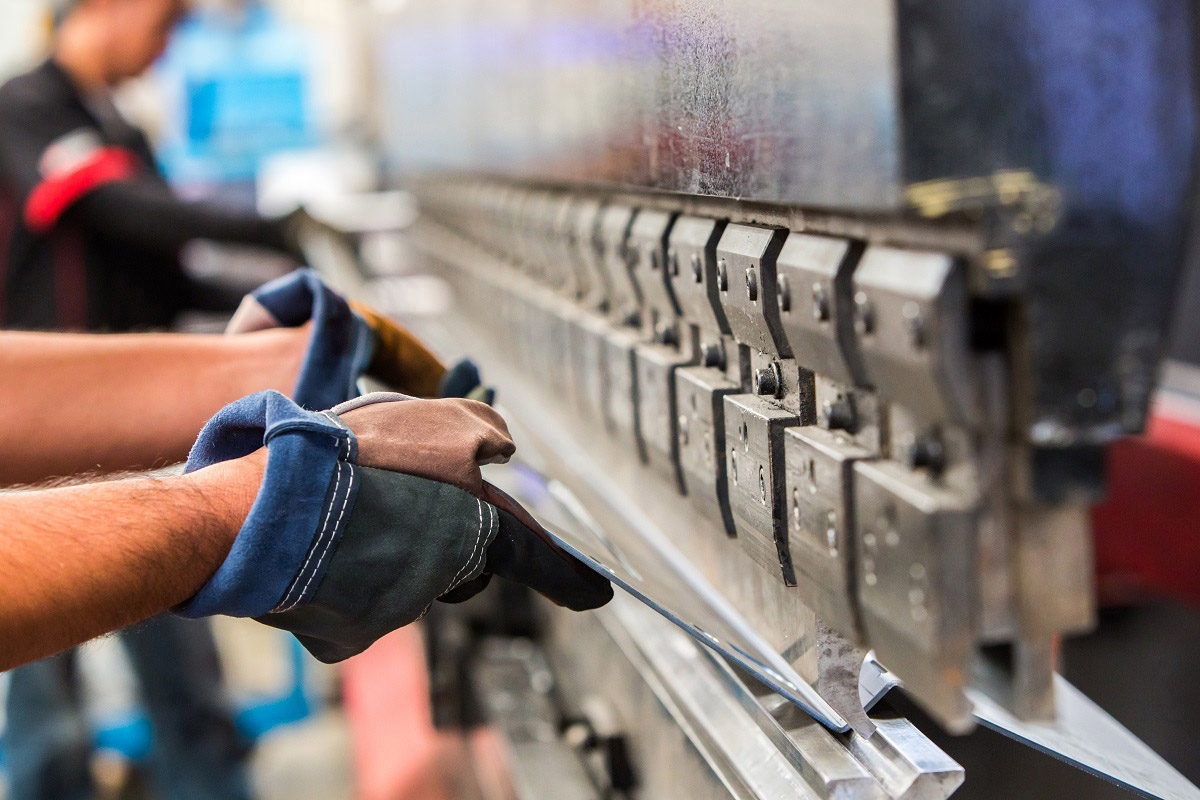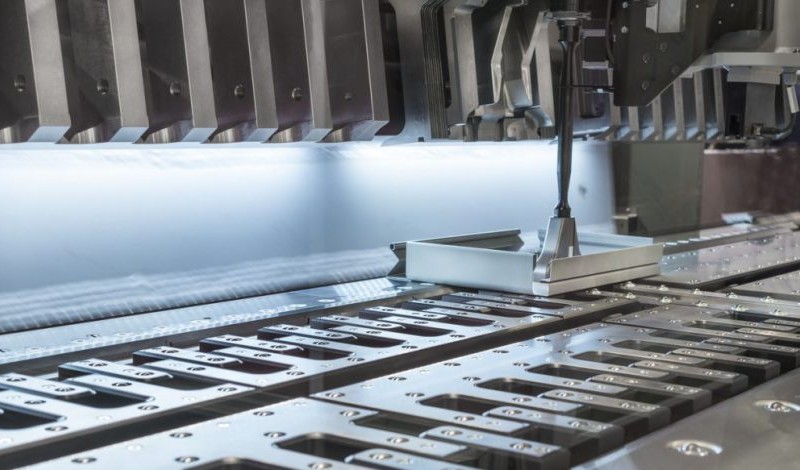Just How Metal Stamping Changes Manufacturing Performance
Just How Metal Stamping Changes Manufacturing Performance
Blog Article
Releasing the Possible of Steel Stamping: Expert Tips and Ideal Practices Revealed
In the realm of metal stamping, where precision and efficiency regime supreme, the mission to enhance processes and unlock hidden potentials is a continuous quest. Experience honed over years of industry experience, combined with cutting-edge technologies and innovative techniques, holds the crucial to achieving unrivaled results. As we browse with the complex world of metal marking, a more detailed check out the complexities of tooling design, material choice, production performance, high quality control, and arising patterns promises a treasure of understandings waiting to be discovered. Stay tuned to uncover exactly how these expert ideas and ideal practices can reinvent the steel stamping landscape.
Tooling Layout Optimization
Maximizing tooling layout is vital for improving performance and accuracy in steel marking procedures. A well-balanced tooling layout can significantly impact the quality and cost-effectiveness of metal stamping operations. By thoroughly thinking about aspects such as product choice, die setup, and part geometry, makers can enhance manufacturing processes and enhance overall product quality.
One trick element of tooling design optimization is picking the most appropriate products for the punches and dies made use of in the stamping procedure. Appropriate die design can aid stop issues such as wrinkling, tearing, and too much springback, leading to higher manufacturing yields and lowered scrap prices.
Moreover, enhancing part geometry via tooling style can assist lessen material waste and production time. By very carefully forming passes away and punches to match the wanted component specs, makers can accomplish tighter resistances and enhanced component high quality. Overall, spending time and resources in optimizing tooling style can result in significant lasting benefits for metal marking operations.

Product Selection Methods
Strategically choosing materials for steel marking tooling is extremely important for ensuring toughness and efficiency in making procedures. When picking materials for steel stamping applications, numerous key elements must be taken into consideration. The very first factor to consider is the sort of material being stamped. Different materials, such as light weight aluminum, stainless-steel, or copper, call for details tooling materials to ensure optimum performance and durability.
One more important consider material choice is the expected manufacturing volume - Metal Stamping. For high-volume production runs, tooling products with remarkable wear resistance and strength, such as device steels or carbide, are commonly chosen to withstand the roughness of continuous marking operations
Furthermore, the intricacy of the stamping layout and the needed precision additionally play a considerable role in product option. For complex stamping patterns or tight resistances, materials with high thermal conductivity and excellent machinability, like beryllium copper or device steel alloys, may be more appropriate to achieve the wanted results.
Manufacturing Efficiency Strategies
To improve making result and decrease manufacturing prices, applying reliable strategies in steel marking procedures is critical. Automated steel marking devices can carry out jobs with accuracy, consistency, and at a much faster rate than hands-on labor, leading to increased performance and lowered cycle times.
One more technique to enhance manufacturing effectiveness is with continuous procedure enhancement. Conducting regular audits and performance evaluations can help identify traffic jams, ineffectiveness, and areas for enhancement within the steel marking process. By analyzing information and comments from these examinations, manufacturers can implement targeted services to improve operations, increase throughput, and make the most of general efficiency.
In addition, adopting lean production concepts, such as 5S approach and Kanban systems, can help eliminate waste, improve workflow, and boost general efficiency in metal marking procedures. By promoting a culture of continuous enhancement and equipping employees to contribute ideas for performance gains, manufacturers can open the full capacity of their metal marking procedures.
Top Quality Control Actions
Building on the foundation of efficient production methods in steel marking processes, ensuring strict quality control measures is crucial for keeping product standards and customer contentment. Quality assurance in steel stamping involves methodical inspection, screening, and monitoring of the production processes to identify and correct any type of variances or defects that can jeopardize the end product's honesty (Metal Stamping). Applying procedures such as regular equipment maintenance, in-process evaluations, and extensive testing of finished parts can help spot issues early and prevent expensive rework or product recalls
Along with positive quality assurance actions, it is necessary to develop clear high quality criteria and specs that line up with client requirements. Normal audits and evaluations of high quality procedures can aid identify areas for improvement and make certain consistency in item top quality. By promoting a culture of top quality consciousness amongst staff members and providing here ample training on high quality control treatments, makers can boost general product reliability and brand name reputation. Inevitably, buying robust quality assurance determines not only safeguards against flaws and non-conformities yet also leads the way for sustained company development and client commitment.

Ingenious Metal Stamping Technologies
Improvements in metal stamping innovations have actually changed the production market, enhancing performance and accuracy in the production process. Among the most considerable developments is the advancement of servo press modern technology. Servo presses supply unmatched control over the marking procedure, allowing for adjustments in force, speed, and dwell time with exceptional accuracy. This degree of control results in higher high quality parts, lowered downtime for tooling changes, and boosted general productivity.

Additionally, the fostering of additive production strategies in steel marking, such as 3D printing of die components, has streamlined the tooling design and production process. This approach permits higher design versatility, fast prototyping, and price savings in tooling manufacturing. By leveraging these ingenious modern technologies, makers can unlock new degrees of effectiveness, quality, and competitiveness in the metal stamping sector.
Conclusion
To conclude, the optimization of tooling design, critical material selection, effective production techniques, quality control measures, and ingenious technologies are vital for releasing the complete capacity of metal marking. By applying these best techniques and professional suggestions, makers can enhance performance, boost top quality, and remain affordable in the metal marking sector. It is vital for firms to continuously examine and enhance their procedures to attain success in this area.
As we browse via the complex globe of metal marking, a more detailed look at the complexities of tooling style, material choice, production efficiency, top quality control, and emerging patterns guarantees a treasure trove of insights waiting to be discovered. A well-thought-out tooling layout can substantially affect the top quality and cost-effectiveness of steel marking operations.Structure on the foundation of efficient manufacturing methods in metal stamping processes, ensuring rigid high quality control steps is essential for preserving item criteria and client satisfaction. Quality control in steel stamping includes organized evaluation, testing, link and surveillance of check here the manufacturing processes to identify and correct any discrepancies or flaws that can endanger the final product's stability.In verdict, the optimization of tooling layout, tactical product option, efficient manufacturing techniques, high quality control actions, and innovative innovations are important for unleashing the full potential of metal stamping.
Report this page